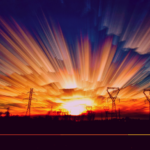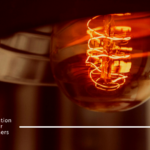Shared distributed generation is one of the modalities created that allow the union of consumers in energy generation.
Do you know how shared distributed generation (GDC) works? GD in Brazil was regulated by the National Electric Energy Agency (Aneel) in 2012 through Resolution 482. Its objective was to enable Brazilians to produce their own energy from renewable sources — such as wind, solar and biomass sources — and to supply the surplus for the distribution network.
With this model, it would be possible to develop new sustainable energy sources, in addition to promoting the decentralization of energy production, giving more autonomy to the consumer, as well as saving on electricity bills.
In 2015, with the increased adoption of this model, Aneel expanded access to the modality. Four new modes of production were created: generation distributed along with the load; generation in condominiums or ventures with multiple consumer units; remote self-consumption and shared distributed generation (GDC).
How does shared distributed generation (GDC) work?
In shared energy generation, it is possible to bring together consumers within the same concession or permission area, through a consortium or cooperative. These consumers, whether individuals or legal entities, must be served by the same distribution network and will share energy from micro or mini-generation. In this case, the generation location needs to be different from where the excess energy will be compensated.
Thus, in practice, residents of the same city can create a consortium and divide the energy produced between their homes or shopkeepers can organize themselves, generate energy on a site or land and reallocate production between stores or buildings of cooperative members/associates.
This model should not be confused with remote self-consumption that has a single subject, whether natural or legal, who develops a generating plant and shares production between establishments or properties linked to their CPF or CNPJ. It is noteworthy that they need to be connected to the same power distribution utility.
With shared generation, it was possible to increase the installed capacity from 1 MW to 5 MW. In addition, in the 2015 review, the validity period of generation credits was increased to up to 5 years, in addition to simplifying the producer registration process with the local energy concessionaire.
What are the benefits of this model?
This modality brought accessibility to distributed generation, allowing more consumers to adhere to the shared model. One of its advantages of sharing is that it works with economies of scale, reducing costs with logistics, maintenance and installation that can be shared with all the consortium participants. Furthermore, the energy produced that is not consumed becomes credit to be used later.
In the case of photovoltaic solar systems, for example, the initial investment is paid in the long term and the equipment has a high durability, around 25 years, reducing the need for maintenance. From an environmental point of view, there are also benefits with a lower impact on nature, as the energy is clean and renewable.
In August 2021, the legal framework for distributed generation was approved in the Chamber of Deputies and now goes to the Senate. After much conversation and negotiation between sectors, it is believed that the proposal has encompassed the main changes needed to bring security to consumers and continue to encourage adherence to the model.
Therefore, shared distributed generation is another alternative to develop the energy market.






